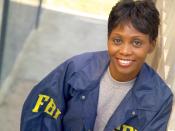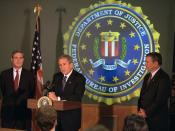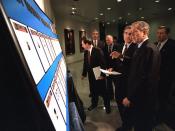It was May 25th 1978, Terry Marker was on his usual patrol on
campus at the University of Illinois. This earmark package, addressed to an
engineering professor at Rensselaer from a material science professor at
Northwestern, was found in a parking lot. What seemed like an insignificant
misplaced parcel was about to start a reign of terror and the longest manhunt
in U.S. history. Officer Marker retrieved the package and began to open it;
the crude triggering mechanism set off the device. A flash of fire and smoke
spewed towards Terry's face as the match heads ignited and the mystery
package exploded. This event sparked the 'most expensive manhunt in
United States history, ultimately costing upward to $50 million' (Douglas,
31). The reasoning behind this initial attack (and subsequent assaults) was
not known for sure until 15 years later in 1993, when the Unabomber's anti-
technology philosophy became public.
The Unabomber's 18 year tirade against technology killed three people
and maimed 23 others in a series of 16 attacks dating back to 1978. The
Unabomber's targets were universities and airlines (thus the 'un' and the 'a'
in the FBI's code name); proponents of technology. The Unabomber believes
that the present industrial-technological society is 'narrowing the sphere of
human freedom' (Unabomber, 93).
The crudeness of the Unabomber's inaugural mail bomb attack was not
an indication of what was to come. The Unabomber's devices became more
sophisticated and deadly as his targets became more specific and focused.
'The pressure vessels in his bombs were the most sophisticated ever seen by
federal authorities' (Ewell, 3). His later efforts were sometimes concealed in
books and hand-carved boxes, had all hancrafted parts carved of wood and
metal (he made his own pins, screws and switches), and sometimes had
altimeter and barometric switches which...


